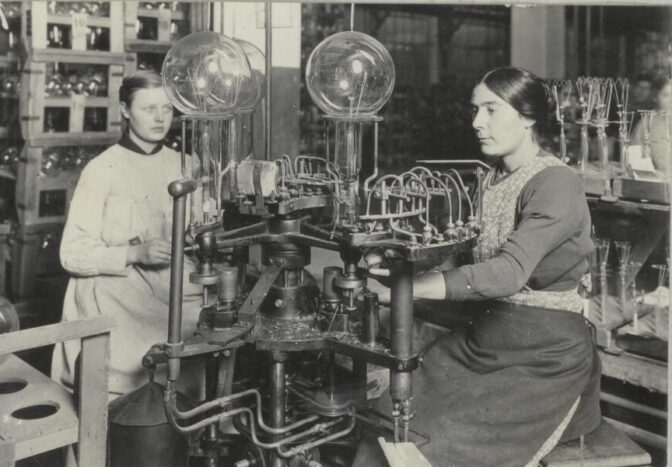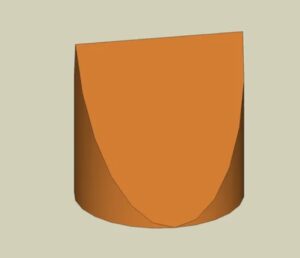In genealogy, we may have direct, indirect, and negative evidence for research questions.
Direct evidence is like a light that shines on the possible answer. It answers the research question directly, though the answer may be partial or even incorrect.
Indirect evidence is like a light that hits a mirror before it shines on the possible answer. The light wouldn’t illuminate the answer if it did not hit something else first. We always need to use indirect evidence in combination with something else to see the possible answer.
Negative evidence is like the shadow that is cast by the possible answer blocking the light. The shadow would not exist if the answer was not there.
Proof happens when we have multiple beams of light or see enough shadows to make out what the answer must be. Not every proof has a blazing light. Multiple small beams from different angles and a few shadows can also tell us what the answer is.

Philips light bulb factory in Eindhoven. Credits: collection Nationaal Archief (public domain)
Example

Imagine this shape.
Looking at it directly from the bottom would show us a circle. Looking at it from the front through an angled mirror might show us only a straight corner, leading us to think we are looking at a square or a rectangle. A light from the left might cast a triangular shadow on the right. Only by using all of this evidence together, we get an idea of what the shape really looks like.
The Genealogical Proof Standard requires us to do reasonably exhaustive research. That ensures we don’t get a flat picture that only shows us one part of our ancestor, but that we view them from all sides to know what they were really like.
I first wrote this as a Facebook post in the Board for Certification of Genealogists Facebook group, and several people asked me to reuse this for educational purposes. You may share this blog post (with or without the example), provided you credit me as the author.
Yvette Hoitink, CG, “Direct, indirect, and negative evidence,” Dutch Genealogy (https://www.dutchgenealogy.nl/direct-indirect-and-negative-evidence/ : published 17 January 2022); shared with permission.


Fantastic description. Really helps people to see the differences.
Great analogies!